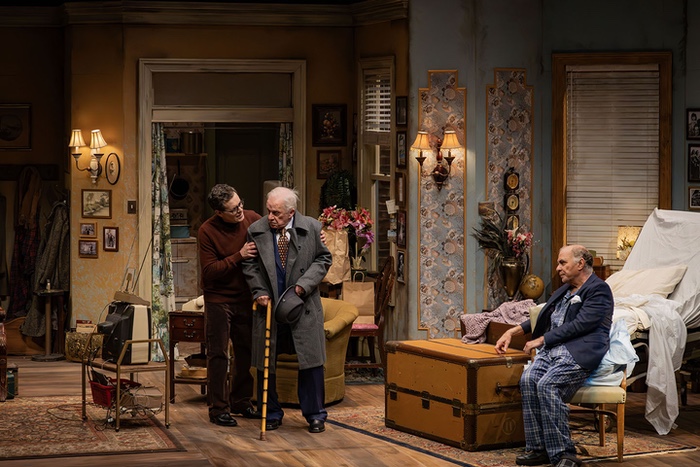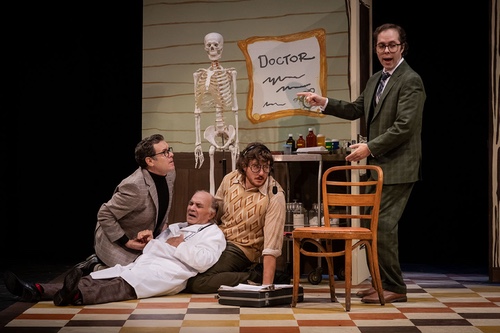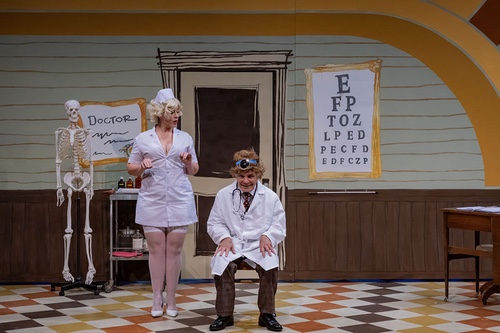
From the mid-1950s through almost the end of the 1960s, Broadway theater went through a period in which the values, morals and attitudes of the post-World War II population were examined.
Dramas by such luminaries as Arthur Miller asked, What is the best way to live?” in his Death of a Salesman, The Crucible and All My Sons. Tennessee Williams probed “What is it like to live in a society that doesn’t understand you and you don’t understand it?” in A Streetcar Named Desire and The Glass Menagerie, while William Inge, whose solitary protagonists were encumbered with strained sexual relations, asked, “What are our hidden secrets?” in The Dark at the Top of the Stairs, Picnic and Bus Stop.
Neil Simon emerged as one of the most popular playwrights with his comedy scripts. Simon was New York through and through. He was born there in 1927, lived his life and died in 2018 in the area, and based most of his plays in Big Apple.
His life was filled with conflict. His parents fought a great deal and his own marriage was filled with angst. In fact, he “blamed” his writing style on this. He once said, “I think part of what made me a comedy writer is the blocking out of some of the really ugly, painful things in my childhood and covering it up with a humorous attitude … do something to laugh at until I was able to forget why I was hurting.”
His productivity and success were unrivaled. He wrote more than 30 plays and nearly the same number of movie screenplays. He won a Pulitzer Prize, had 17 Tony nominations, four Tony Awards and a Golden Globe Award, as well as nominations for four Academy Awards and four Primetime Emmy Awards. In 1966, he had four successful productions running on Broadway at the same time and, in 1983, he became the only living playwright to have a New York theater, the Neil Simon Theatre, named in his honor.

His play, The Sunshine Boys, now on stage at Beck Center, opened in 1972 and starred Jack Alberton and Sam Levine. It was met with strong positive reviews.
The script’s protagonists, Al Lewis and Willie Clark (supposedly based on the real-life team of Gallagher and Shean), were once a major vaudeville comedy duo known as the Sunshine Boys. Their 43-year run was filled with conflict and when it ended, with Al retiring from show business, leaving Willie, bitter and frustrated, the duo stopped speaking to each other.
It’s now eleven years later and we find Willie, struggling with memory loss living alone in the same apartment he had occupied most of his marriage-less life, being cared after by his nephew and “agent,” Ben. CBS wants the Lewis and Clark duo to recreate their famous “The Doctor Will See You” sketch as part of their history of comedy special. This, of course, would require the cranky old men to speak to each other.
When they reluctantly meet to rehearse, the reunion goes badly with the “boys” entering into heated arguments over the words they will use, the arrangement of the furniture, and the elimination of chest poking and spitted out words which started with a “t.” The conflicts continue in the television studio.
The ending — this is a comedy which requires that it have a happy ending — is endearing!
It is eye-opening that almost all of the famous comic vaudeville duos, such as Abbott and Costello, Gallagher and Sheen, Martin and Lewis, and Smith and Dale, all had tumultuous endings.
Beck’s production, under the direction of William Roudebush, works adequately well. For this play to succeed requires that the audience warm up to the duo as, underneath their bluster, each is a teddy bear and that the comedy sketch be done with raucous abandonment, bridging on farce.
Doing Borscht Belt comedy is difficult, almost impossible for modern day actors. It is not their fault. It takes years to hone the skills of listening, reacting and recreating movements that bring the needed laughs. That type of vaudeville is not something that someone who has not observed and practiced for years can accomplish.
Rohn Thomas succeeds in making Al Lewis loveable, but Alan Safier’s Willie is sometimes so overdone that he becomes irritating and we lose our “love” for him. They try hard in the “The Doctor is In,” skit, but just don’t produce the perfection of farce comedy needed. Not bad, (drum roll) but just not quite good enough.
Carolyn Demanelis is physically right for the role of the zaftig Vaudeville Nurse and Joyce Bell Linzy adds delight as the sarcastic Registered Nurse.

Capsule judgment: It is enjoyable when a theater reprises a Neal Simon comedy. The Sunshine Boys, because of the requirement of enacting the classic comic routine, is probably the most difficult Simon play to stage well. The cast and crew give full effort, but don’t completely hit the bullseye!
The Sunshine Boys runs through October 6 at Beck Center for the Arts Sense Theater. For tickets call 216-521-2540 or go to beckcenter.org
One Response to “THEATER REVIEW: “The Sunshine Boys” @ Beck Center by Roy Berko”
Edward Mycue
This philosophic viewing is full of charm framing it on the wall of readers’ minds as proof that an old play is apparent today.